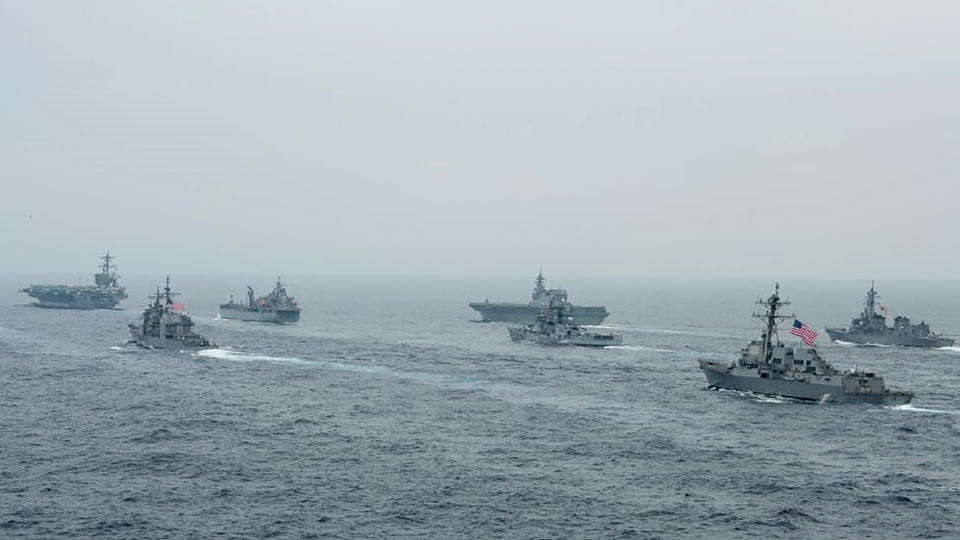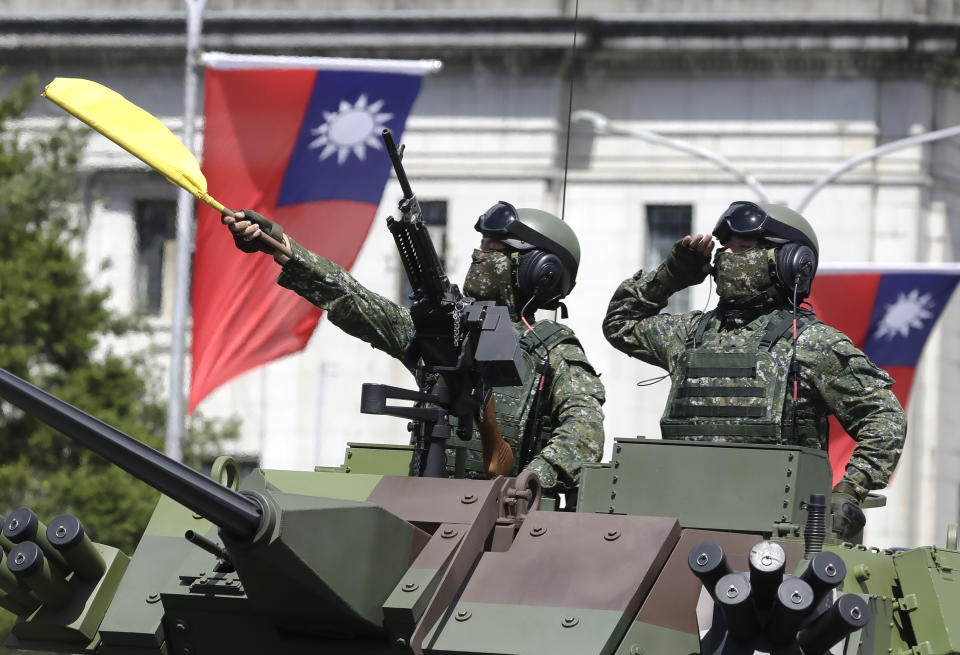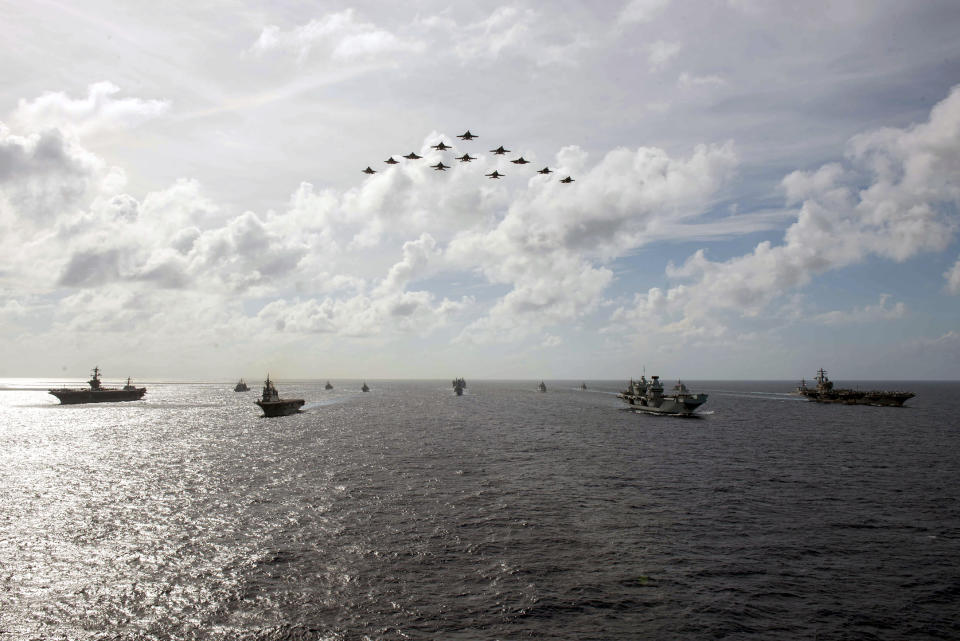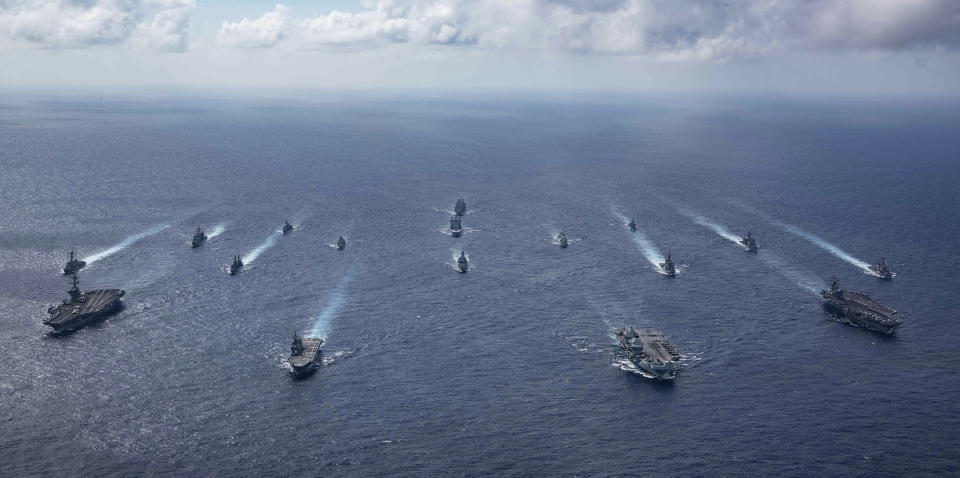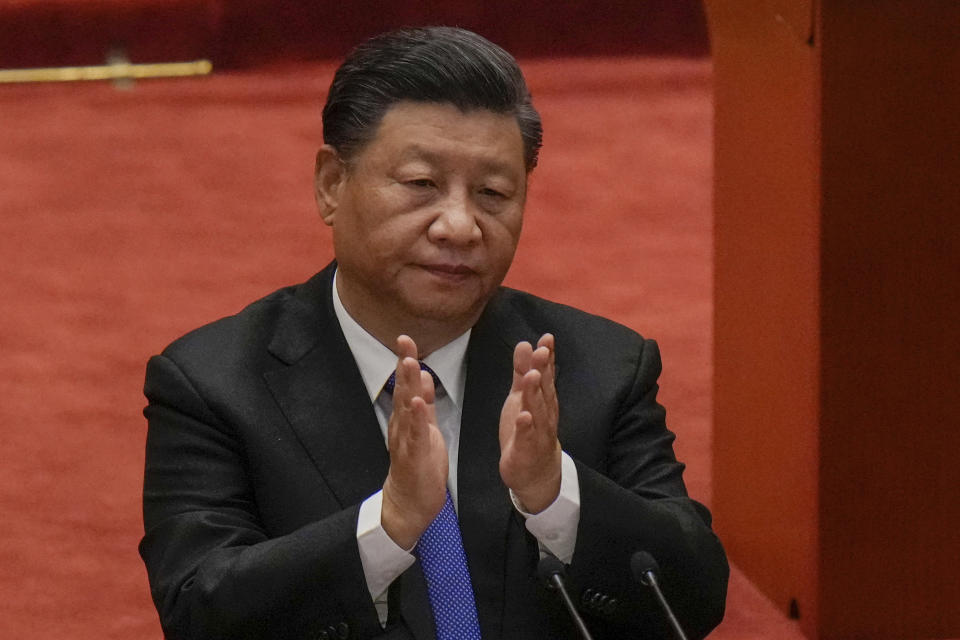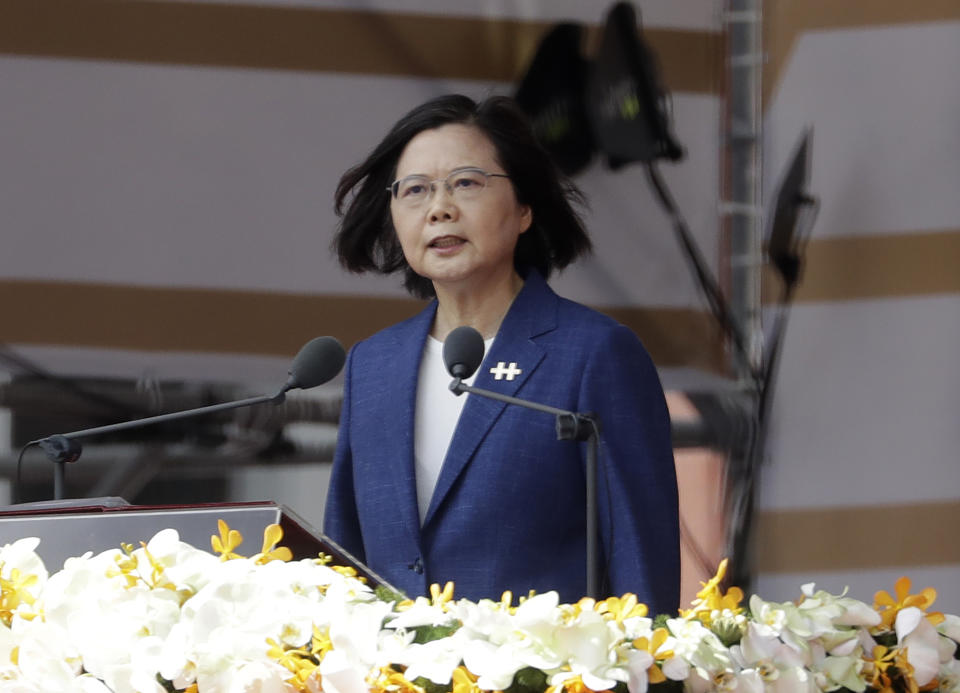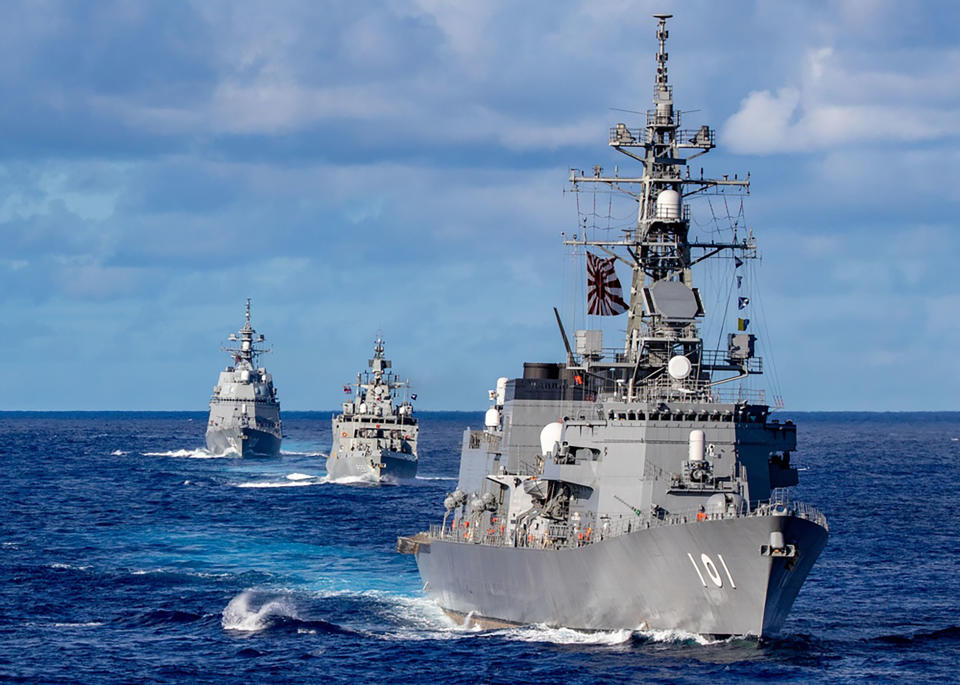Taiwan tensions raise fears of US-China conflict in Asia
BANGKOK (AP) — After sending a record number of military aircraft to harass Taiwan over China’s National Day holiday, Beijing has toned down the saber rattling but tensions remain high, with the rhetoric and reasoning behind the exercises unchanged.
Experts agree a direct conflict is unlikely at the moment, but as the future of self-ruled Taiwan increasingly becomes a powder keg, a mishap or miscalculation could lead to confrontation while Chinese and American ambitions are at odds.
China seeks to bring the strategically and symbolically important island back under its control, and the U.S. sees Taiwan in the context of broader challenges from China.
“From the U.S. perspective, the concept of a great power rivalry with China has driven this back up the agenda,” said Henry Boyd, a Britain-based defense analyst with the International Institute for Strategic Studies.
“The need to stand up to China is a strong enough motivating factor that not taking this fight would also be seen as a betrayal of American national interests.”
China claims Taiwan as its own, and controlling the island is a key component of Beijing’s political and military thinking. Leader Xi Jinping on the weekend again emphasized “reunification of the nation must be realized, and will definitely be realized” — a goal made more realistic with massive improvements to China’s armed forces over the last two decades.
In response, the U.S. has been increasing support for Taiwan and more broadly turning its focus to the Indo-Pacific region. U.S. State Department spokesman Ned Price on Tuesday emphasized that American support for Taiwan is “rock solid,” saying “we have also been very clear that we are committed to deepening our ties with Taiwan.”
Washington’s longstanding policy has been to provide political and military support for Taiwan, while not explicitly promising to defend it from a Chinese attack.
The two sides came perhaps the closest to blows in 1996, when China, irked by what it saw as increasing American support for Taiwan, decided to flex its muscle with exercises that included firing missiles into the waters some 30 kilometers (20 miles) from Taiwan’s coast ahead of Taiwan’s first popular presidential election.
The U.S. responded with its own show of force, sending two aircraft carrier groups to the region. At the time, China had no aircraft carriers and little means to threaten the American ships, and it backed down.
Stung by the episode, China embarked upon a massive overhaul of its military, and 25 years later, it has significantly improved missile defenses that could easily strike back, and equipped or built its own aircraft carriers.
The U.S. Defense Department’s recent report to Congress noted that in 2000, it assessed China’s armed forces to be “a sizable but mostly archaic military” but that today it is a rival, having already surpassed the American military in some areas including shipbuilding to the point where it now has the world’s largest navy.
Counting ships isn’t the best way to compare capabilities — the U.S. Navy has 11 aircraft carriers to China’s two, for example — but in the event of a conflict over Taiwan, China would be able to deploy almost the entirety of its naval forces, and also has land-based anti-ship missiles to add to the fight, said Boyd, a co-author of IISS’s annual Military Balance assessment of global armed forces.
“China’s concept of operations regarding Taiwan is that if they can delay the U.S. presence in the fight, or restrict the numbers that they’re able to put into the fight because we’re able to hold their forward assets at some level of risk, they can beat the Taiwanese before the Americans show up in enough force to do something about it,” he said.
Taiwan’s own strategy is the mirror image — delaying China long enough for the U.S. and its allies to show up in force. It has significant military forces itself, and the advantage of fighting on its home turf. A recent policy paper also notes the need for asymmetric measures, which could include things like missile attacks on mainland China ammunition or fuel dumps.
Taiwan’s defense department’s assessment of China’s capabilities, presented to parliament in August and obtained by The Associated Press, says China already has the ability to seal Taiwan’s ports and airports, but currently lacks the transport and logistical support for large-scale joint landing operations — though is improving by the day.
In a new strategic guidance policy last week, U.S. Navy Secretary Carlos Del Toro, identified China as the “most significant” long-term challenge.
“For the first time in at least a generation, we have a strategic competitor who possesses naval capabilities that rival our own, and who seeks to aggressively employ its forces to challenge U.S. principles, partnerships and prosperity,” the paper said.
China, over its National Day weekend at the beginning of the month, sent a record 149 military aircraft southwest of Taiwan in strike group formations — in international airspace but into the island’s buffer zone, prompting Taiwan to scramble its defenses.
On Monday, China announced it had carried out beach landing and assault drills in the mainland province directly opposite Taiwan.
Ma Xiaoguang, spokesperson of the mainland government's Taiwan Affairs Office, justified the actions as necessary, saying Wednesday they were provoked by “Taiwan independence forces” colluding with “external forces.”
“With every step the Chinese are trying to change the status quo and normalize the situation through this salami slicing," said Hoo Tiang Boon, coordinator of the China program at the S. Rajaratnam School of International Studies in Singapore. "They know Taiwan cannot do anything about it, and the danger is that possibility of miscalculations or mishaps do exist.”
Taiwan and China split in 1949 amid a civil war, with Chiang Kai-shek’s Nationalists fleeing to the island as Mao Zedong’s Communists swept to power.
In a 2019 defense white paper, Beijing said it advocates “peaceful reunification of the country” — a phrase repeated by Xi over the weekend — but is also unequivocal in its goals.
“China must and will be reunited,” the paper reads. “We make no promise to renounce the use of force, and reserve the option of taking all necessary measures.”
Taiwanese President Tsai Ing-wen, meantime, has been making the case for more global support, writing in the most recent edition of Foreign Affairs magazine that “if Taiwan were to fall, the consequences would be catastrophic for regional peace and the democratic alliance system.”
“A failure to defend Taiwan would not only be catastrophic for the Taiwanese," she wrote. "It would overturn a security architecture that has allowed for peace and extraordinary economic development in the region for seven decades.”
U.S. law requires it to assist Taiwan in maintaining a defensive capability and to treat threats to the island as a matter of “grave concern.”
Washington has recently acknowledged that U.S. special forces are on the island in a training capacity, and it has been stepping up multinational maneuvers in the region as part of a stated commitment to a “free and open Indo-Pacific.” They included an exercise involving 17 ships from six navies — the U.S., Britain, Japan, Netherlands, Canada and New Zealand off the Japanese island of Okinawa earlier this month.
The so-called Quad group of nations — the U.S., Australia, India and Japan — on Thursday were concluding joint exercises in the Bay of Bengal, which Japan’s Defense Ministry said showed their resolve to uphold “fundamental values such as democracy and the rule of law.”
Washington also signed a deal last month in concert with Britain to provide Australia with nuclear-powered submarines, which China said would “seriously damage regional peace and stability.”
“The Americans are trying to bring in the allies on a united front,” said Hoo. “There’s a growing internationalization of the Taiwan issue.”
Right now, neither side's armed forces feels fully prepared for a conflict over Taiwan, but in the end it may not be their decision, Boyd said.
“It's not going to be up to the military," he said. “It's going to be up to the politicians.”
_____
Associated Press writers Matthew Lee in Washington and Huizhong Wu in Taipei, Taiwan, contributed to this report.
